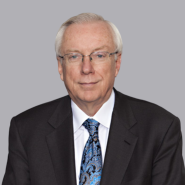Traversing Obviousness Rejections
- October 18, 2021
- Article
Associated People
Associated Technologies
In Chemours Co. FC LC v. Daikin Industries Ltd. et al., 4 F.4th 1370 (Fed. Cir. 2021) reversed a PTAB decision finding the following claim to be unpatentable as obvious:
1. A partially-crystalline copolymer comprising tetrafluoroethylene, hexafluoropropylene in an amount corresponding to a hexafluoropropylene index (HFPl) of from about 2.8 to 5.3, said copolymer being polymerized and isolated in the absence of added alkali metal salt, having a melt flow rate of within the range of about 30±3 g/10 min, and having no more than about 50 unstable end groups/106 carbon atoms.
The claimed polymers were used to coat wires at high extrusion speeds while producing a high-quality coating. The PTAB found the claim to be obvious from U.S. Patent No. 6,541,588 (“Kaulbach”). Kaulbach taught that polymers with narrow molecular weight distributions performed better than those with broader distributions and that melt flow rates of ≥15 g/10 min are suitable for high- speed wire extrusion. The highest melt flow rate taught was 24g/10 min for sample A11. Kaulbach taught against using known methods for increasing the melt flow rate such as chain transfer agents or high fluorination temperatures because they intrinsically broadened the molecular weight distribution.
In finding the claim obvious the PTAB ignored these teachings:
[E]ven though Kaulbach generically touts that “high processing rates can be achieved” “[d]espite a narrow molecular weight distribution” ([Kaulbach], 3:59–60), this purported discovery would not have prevented the skilled artisan, at the time of the invention of the ’609 patent, from considering other techniques—such as broadening the polymer’s molecular weight distribution—to achieve higher coating speeds with Sample A11. Based on the evidence presented, we are persuaded that one such technique would have included increasing Sample A11’s [melt flow rate] from 24 g/10 min to the recited range of “about 30±3 g/10 min,” even if doing so would have required broadening the molecular weight distribution of the polymer beyond the “narrow molecular weight distribution” suggested, but not required or precisely defined, by Kaulbach.
The PTAB’s reasoning is not supported by Kaulbach’s disclosure or claims, both specifying a molecular weight distribution of less than 2 as determined by the ratio of average molecular weight to number average molecular weight. The Court found that the PTAB’s finding of obviousness was not supported by substantial evidence by ignoring the specific teaching regarding molecular weight distribution.
The PTAB’s decision is disappointing since it simply adopted the approach of many examiners; apply only the favorable portions of a disclosure and ignore the portions that don’t fit the rejection.
In traversing obviousness rejections, it is important to determine if the examiner has provided reasons for the rejection supported by fact and has the examiner ignored portions of the prior art teaching away from the examiner’s position.
Recent Publications
5 IP Rules to Know to Protect Your Business in the United States (article in French)
Coaching INPI Newsletter










 Counseling & Strategic Advice
Counseling & Strategic Advice IP Transactions
IP Transactions Litigation
Litigation PTAB Proceedings
PTAB Proceedings Start-Up
Start-Up Technology Transfer
Technology Transfer Trademark & Designs
Trademark & Designs U.S. Patent Procurement (Application Drafting & Prosecution)
U.S. Patent Procurement (Application Drafting & Prosecution)








